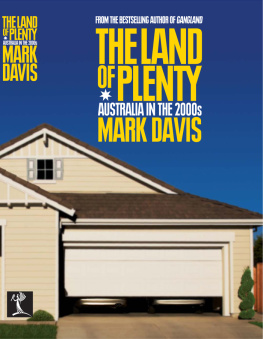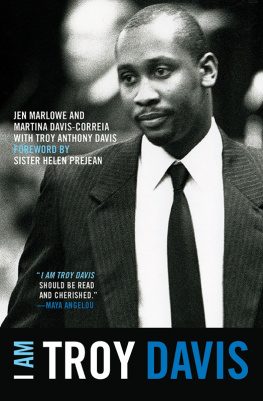LAND AND FAMILY IN PISTICCI
LONDON SCHOOL OF ECONOMICS MONOGRAPHS ON SOCIAL ANTHROPOLOGY
Managing Editor: Charles Stafford
First Published in 2004 by Berg Publishers
Published 2020 by Routledge
2 Park Square, Milton Park, Abingdon, Oxon OX14 4RN
605 Third Avenue, New York, NY 10017
Routledge is an imprint of the Taylor & Francis Group, an informa business
J. DAVIS 2004
All rights reserved. No part of this book may be reprinted or reproduced or utilised in any form or by any electronic, mechanical, or other means, now known or hereafter invented, including photocopying and recording, or in any information storage or retrieval system, without permission in writing from the publishers.
Notice:
Product or corporate names may be trademarks or registered trademarks, and are used only for identification and explanation without intent to infringe.
ISBN 13: 978-1-8452-0039-8 (hbk)
ACKNOWLEDGEMENTS
This book is based on a thesis written for the degree of doctor of philosophy in the University of London.
The research for it was done over twenty-one months between March 1963 and January 1966. It was financed by a London School of Economics postgraduate studentship, and by grants from: the British Academy; the Central Research Fund Committee of the University of London; the Mediterranean Research Committee of the London School of Economics, the School of Oriental and African Studies and the University of Kent at Canterbury; and from Ann Arbor, Michigan. I wish to thank all these bodies publicly.
In England A. P. Stirling inducted me to anthropology and to Italy; Lucy Mair supervised the thesis and gave me invaluable help in turning it into a book. I am deeply grateful to them.
In Italy, I was welcomed, fed, nursed, comforted, tolerated and made to understand by Rocco Mazzarone, Gilberto Marselli and Manlio Rossi-Doria: I am deeply grateful to them.
Mr John Goy prepared the index.
I dedicate this book to the protagonists, the Pisticcesi.
A NOTE ON ORTHOGRAPHY AND ALLIED MATTERS
Most Pisticcesi speak Italian as well as their own dialect, and this book contains words and phrases in both. The dialect is increasingly Italianised and is losing many of its idiosyncratic words, structures and sounds. It is written here so that, were any Italian to read it aloud, it would sound more or less like Pisticcese. To write it so is common practice.
While I doubt that any reader needs guidance in Italian, two points about die dialect may be helpful. The first is that while Pisticcesi often leave off the last syllable of words, they accentuate the remaining syllables as they would were the word complete. So, Italian scappare becomes Pisticcese scappa, written scapp: it is the infinitive form and is quite distinct from scappa, which is Italian third person singular, present indicative. This procedure is common to many southern dialects.
The second point is that the feminine ending in the singular and plural is an open, unstressed e, as in unstressed the or as final e in French verse and song. Some writers transcribe this simply as e; others, whom I have largely followed, use an apostrophe (e.g. Zi aunt, aunts) to distinguish the dialect from the Italian feminine plural.
Another matter: Statistical Table can be translated into Italian as either tavola or tabella: the corresponding abbreviations are tav. and tab. I have not standardised my usage, and follow that of the various sources I cite.
Finally, the names of most of the people and all the places are real names, not invented ones. A few incidents are scrambled and thereby, I hope, disguised.
CONTENTS
2. MARRIAGE
3. FAMILIES, KINSHIP AND NEIGHBOURHOOD: I
4. FAMILIES, KINSHIP AND NEIGHBOURHOOD: II
5. THE DISTRIBUTION OF LAND IN PISTICCI, 18141960
6. WORK
7. FRAGMENTATION AT CAPOROTONDO
8. RIGHTS AND RESOURCES
9. SOME EFFECTS OF MODERNIZATION PROGRAMMES
10. LAND TENURE, KINSHIP AND SOCIAL STRUCTURE
APPENDICES
LIST OF WORKS CITED
TABLES
3. Pisticci: Properties by size, 1814
4. Pisticci: Properties by categories of owner, 1814
5. Pisticci: Properties by size, 1946
6. Pisticci: Sale of demesne fragments (spezzoni), 187297
7. Pisticci: Categories of house owner, 1814
8. Caporotondo: Land use, 1962
9. Metaponto: Balance sheet for tobacco sharecropping
10. Caporotondo: Properties by the numbers of owners, 1962
11. Caporotondo: Variation of properties from average size, 1866, 1962
12. Caporotondo and elsewhere: scattered properties, 1962
13. Caporotondo: Types of conveyance, 193062
14. Caporotondo: How present owners acquired their land; amount of land affected, 1962
15. Caporotondo: Year of acquisition of property rights by present owners, 1962
16. Caporotondo: Number of times particelle change hands, 193062
17. Caporotondo: Property-owning groups and amount of land by relationship of members, 1962
18. Caporotondo: By what right does the cultivator cultivate?
FIGURES
1. The Capece family
2. The Di Marsico siblings
3. Relationship of Capece and Giannace families
4. Marriage strategies: DAlessandro
5. Marriage strategies: Giannace
MAPS
Italy: Pisticci, Caporotondo
Part of Caporotondo: By what right does the cultivator cultivate?
PLATES
(Plates 14 between pages 623)
Pisticci from the south frontispiece
1a. Pisticci: Domenico Giannace in the office of the Peasants Alliance
b. Pisticci: The Clerisy
2a. Pisticci: Piazza Umberto
b. Pisticci: a building site
3a. Caporotondo: Ploughing a patch of arable with trees
b. Caporotondo: A vegetable garden
4a. Caporotondo: Pietro Di Marsico helps build a haystack
b. Caporotondo: View from the north-west
- 2. Marriage
- 3. Families, Kinship and Neighbourhood: I
- 4. Families, Kinship and Neighbourhood: II
- 5. The Distribution of Land in Pisticci, 18141960
- 6. Work
- 7. Fragmentation at Caporotondo
- 8. Rights and Resources
- 9. Some Effects of Modernization Programmes
- 10. Land Tenure, Kinship and Social Structure
- List of Works Cited
1
Introduction
The closer a society is to our own the more difficult it is to begin an anthropological account of it. A description of a Polynesian island can begin quite easily:
Almost before the chain was down, the natives began to scramble aboard, coming over the side by any means that offered, shouting fiercely to each other and to us in a tongue not a word of which was understood by the Mota-speaking folk of the mission vessel.














